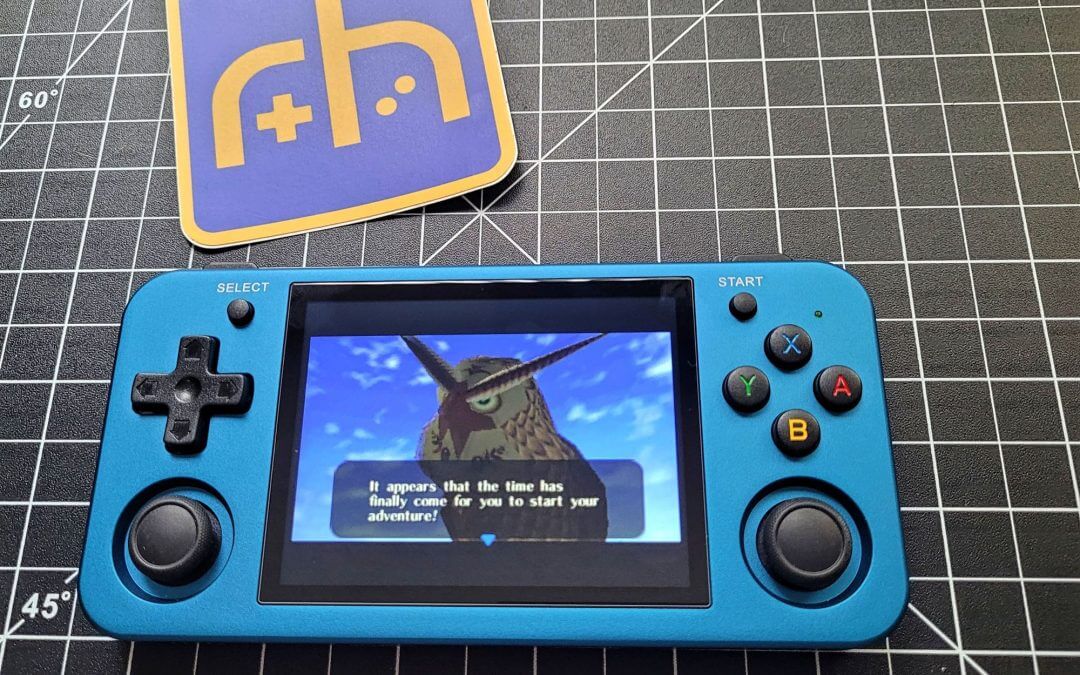Here we go again, another 353 device from Anbernic. Not exactly unexpected, when the RG350 and 351 devices went with metal, plastic, and vertical versions, with the 351 even throwing in a bonus design with the MP. The RG353M ditches the nostalgic form factor of the 353V, instead adopting the brick form factor that has been popular in their recent devices. It’s Anbernic taking steps forward, rather than a leap, being a refinement of the 350 and 351 rather than a revolutionary new concept. It does manage to impress amongst its peers and, due to many factors including the metal build and the fancy new sticks, ends up being perhaps the definitive 353 device.
Out now starting at the price of $145.99 USD, you can find it at Anbernic’s website, Aliexpress, and Amazon all for sale, though you’ll obviously be paying that convenience tax with Amazon. Now at that price, I think we can agree this has left the relatively budget playground that previous devices even in the 353 line have entertained. Make no mistake, this is a premium product, meant for diehards and tryhards – I mean, discerning individuals with refined tastes of course. It’s sleek, it’s sexy, it feels lovely and heavy in the hand, you could probably knock a dude out if you chucked it at his head. Probably not the quality you look for in a handheld purchase, but our audience is diverse in their proclivities, so you never really know.
Obviously, sporting the same chipset as the previously reviewed 353V, there are going to be a lot of similarities between that device and the 353M. For those of you that haven’t seen that review, you can go here to read it, but I will still go over the samey-same prior to highlighting the differences within this review. For those who have seen that review, buckle up for just a touch of deja-vu.
Hardware

So let’s start at the top with that processor chip. The Rockchip 3566 is a quad-core Cortex-A55, with clock speeds reaching a maximum of 1.8GHz. This has been paired up with 2GB of LPDDR4 RAM.
In terms of storage features, Anbernic certainly threw everything but the kitchen sink into this. It has a primary SD card slot for the Linux firmware, as well as the possibility of primary storage. However, there is also a secondary SD card slot for storage. This is a beneficial feature that they have included on prior models, as in the event of corruption to the firmware during an update, or simply when you’d like to reflash to a different firmware entirely, it does not require you to migrate your entire ROM library if they are on the secondary card instead.
Since the 353M has dual-boot with Android, this secondary slot also acts as secondary storage within the Android side of the device as well. This allows you to seamlessly access your ROM library regardless of which operating system you boot into. Lastly in terms of storage, speaking of the Android half of things, there is an onboard eMMC 5.1 module with 32GB of storage for that operating system.
Powering the device is a 3200 mAh battery, which is a moderate bump up from the 353V and in line with the 353P battery capacity instead. It has been claimed to feature up to 7 hours of battery life, but your mileage will vary depending on how much horsepower your gaming demands. You’ll be likely to have much more battery time out of easy tasks like NES or Genesis emulation than you would out of the more challenging N64 or Dreamcast.
The rest of the hardware capabilities are great for a device in this category. It features dual-band AC wifi as well as Bluetooth 4.2 for connectivity. For ports it’s reasonably standard, with two USB-C ports, a mini-HDMI port, and a 3.5mm headphone jack. One of the USB-C ports is for OTG functionality, to use with any USB accessories, and the other is for charging as well as data transfer in Android mode. The headphone jack is once again on top of the device, which will be good or bad news depending on your preferences, but for those that don’t like it there’s always the option of bluetooth headphones; my personal choice.
Let’s finish up by talking about the screen, and it is a lovely screen indeed. It is a 3.5-inch IPS display, with OCA lamination and 640×480 resolution. In addition to this, it has full multipoint capacitive touch capabilities, and it is very responsive, allowing for great Android navigation. You’ll recognize the overall quality as being fairly similar to recent Anbernic handhelds like the RG351MP and 351V, as well as the recent 353V and 353P, which all have very gorgeous vibrance and color.
Inputs and Comfort
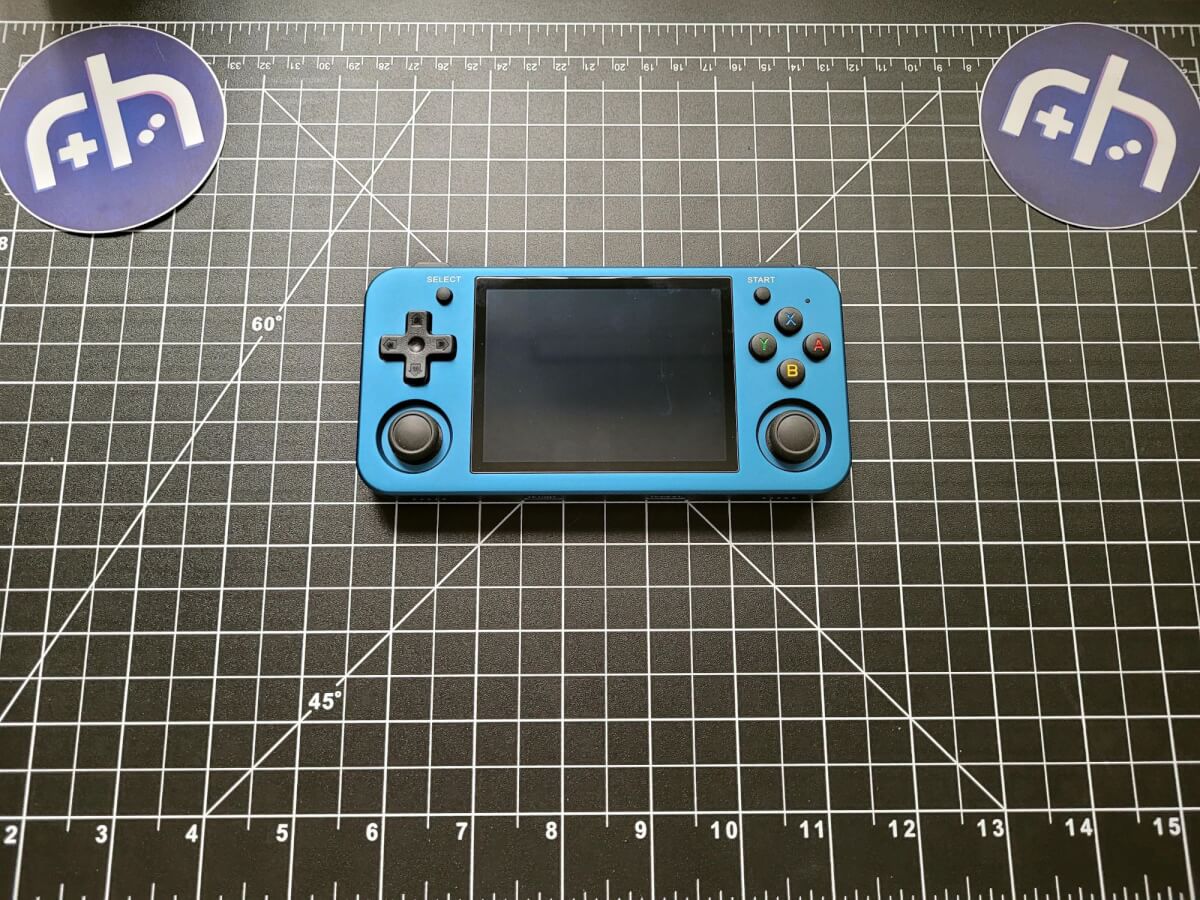
So here is where we get to the differences, as this is a very different feeling device from the rest of the 353 lineup, coming more in-line ergonomically with the previous generation 351MP. Despite packing more power and features under the hood, however, this device manages to be thinner and smaller than the MP by a decent margin. This leads to greater pocketability and reduced weight, making for an even better travel companion. It measures in at 14.5cmx7.05cmx1.59cm (5.7inx2.8inx0.6in) and weighs 230 grams (0.5 pounds). Now that we’ve got the stats out of the way, how does it feel?
We can start with the dpad and face buttons since those will probably be the most often used inputs on the device. If you’ve ever held an Anbernic handheld before you’ll know what to expect here. The rubber membranes are well-tuned with satisfying travel, a solid bottom-out, it feels very precise and responsive. My one minor gripe here is that the dpad feels a bit stiffer than the one on the 353V, and I think I liked the lighter membranes a bit more, but that’s personal preference.
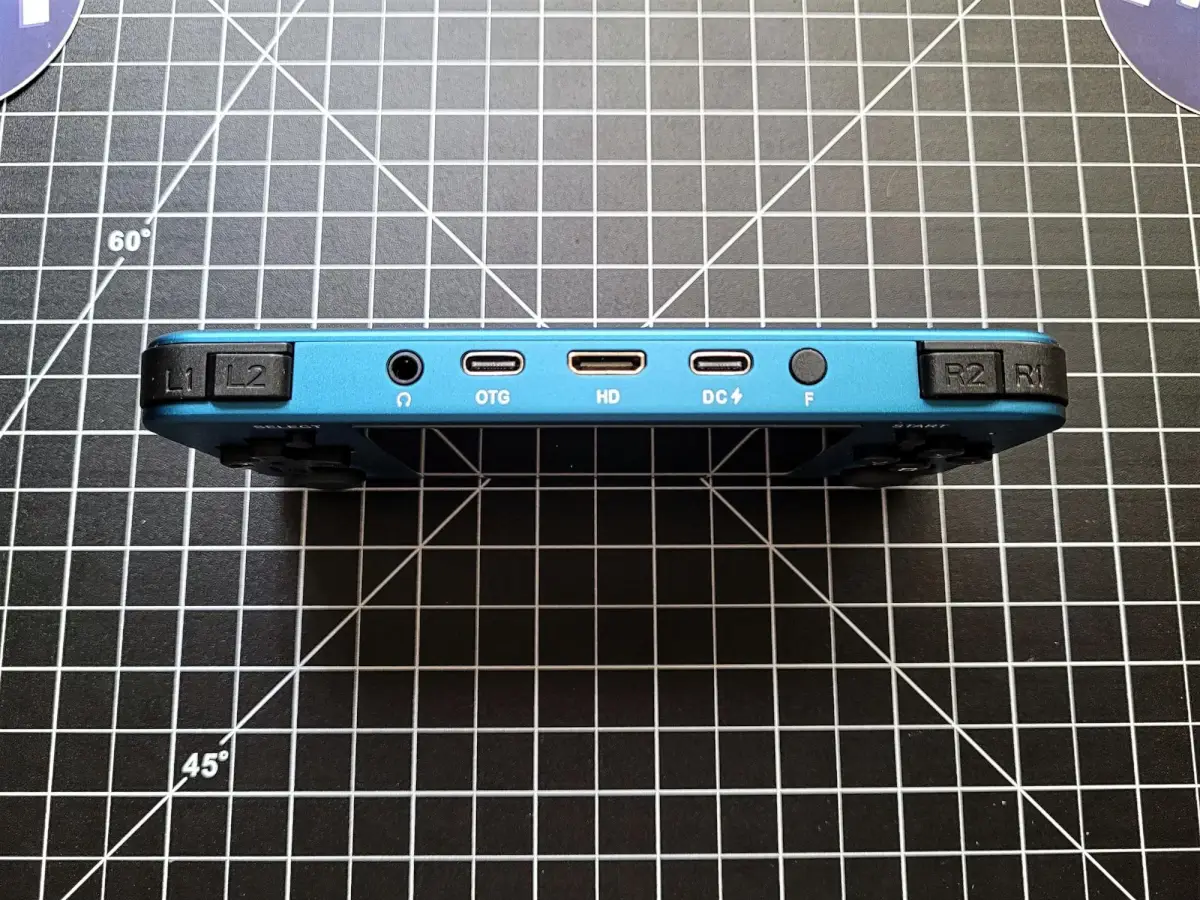
The analog sticks meanwhile have a little bit of a surprise to them. Right from the start you can notice they look just a bit different, with a thicker rubberized lip that I think feels a bit better than the usual Switch-alikes. Below the external appearance, it turns out Anbernic has sourced hall-effect joysticks for this device. Your usual joysticks use mechanical parts known as potentiometers to detect the movement of the stick, whilst hall effect sticks use magnets to detect the stick’s position in the magnetic field. What this means in practice is that the older technology has moving parts related to positioning that can wear down over time, resulting in the dreaded stick drift, whereas hall effect sticks should theoretically be immune to stick drift. The lack of moving parts should also result in a smoother overall joystick experience, and while these didn’t feel much different on their own, once the device was powered on and playing games there was definitely a tangible difference in responsiveness and precision that I enjoyed. This is a positive change that I hope signals a trend within the handheld industry, as we’ve also seen hall-effect sticks coming to many of the x86 handhelds recently. Anyway, besides the technology present within the sticks, the analogs in the 353M are well-placed and recessed into the device to keep them out of the way during dpad and face button use, while still comfortable for primary use, albeit with the slight concession to their potential range as is common with recessed sticks.
Last to feature on the front of the device is simply the start and select buttons. What can I say about them? They’re well-placed little nubs with rubber membranes, they feel fine and they do their job. Not much to say here, but really glad they’re on the front of the device in an easily accessible spot. Meanwhile, rather than being on the front the speakers are down-firing, a reasonably common feature in handhelds that relies upon them reflecting sound off the palm of your hands. These speakers are stereo, and they’re rather good, which is probably due to some interesting shielding inside considering they’re right next to the magnetic joysticks.
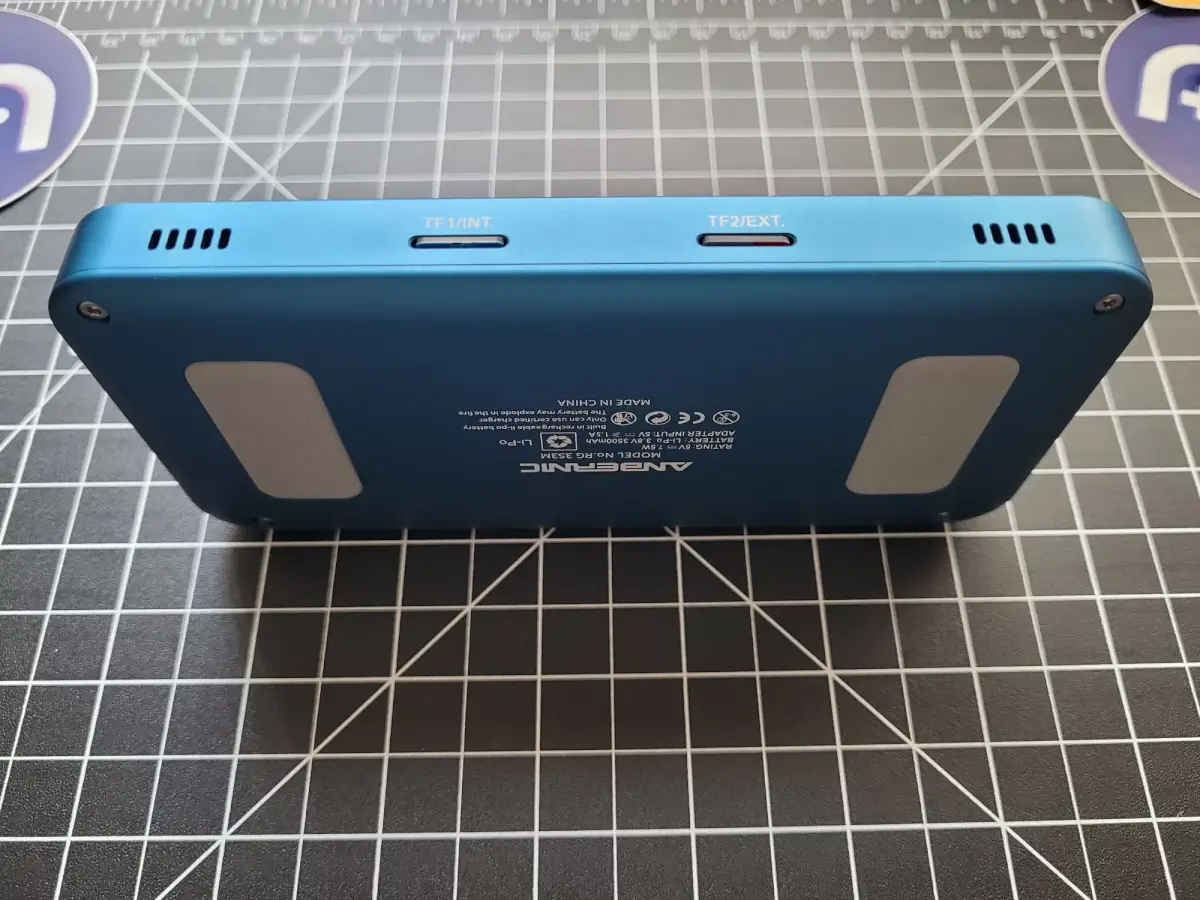
Around the rest of the device we’ll find a few buttons. On the right side is the power and reset very near each other, both recessed, though thankfully the power button is a more elongated and distinct button than the tiny circular reset button. On the left we find the digital volume rocker, also recessed into the device to prevent accidental presses during gameplay. Lastly on the top we come across the bulk of the remaining important inputs. Firstly we have the function button, which is used in the default Anbernic OS as a hotkey, although this one is definitely in a more inconvenient spot than the one on the 353V. Flanking the function button and ports are the L1/L2 R1/R2 shoulders and triggers. These are the same shoulders and triggers Anbernic has been using for a while, inline and clicky, but they manage to distinguish themselves by raising the L2 and R2 trigger buttons a few millimeters above the shoulders. While perhaps not enough to sway the anti-inline crowd, this does help with comfort and blind differentiation during gameplay and is a welcome change that Anbernic should continue as long as they’re dedicated to continuing the inline trend.
Software and OS
When it comes to the operating systems on offer in the 353M, we see the same dual-boot system that Anbernic has been offering in its recent handhelds. Using their micro-sd card firmware you’ll be booted into the user-friendly yet restricted Linux, while removing that card defaults the system to booting into Android. Each side has its advantages, and we’ll go over these here.
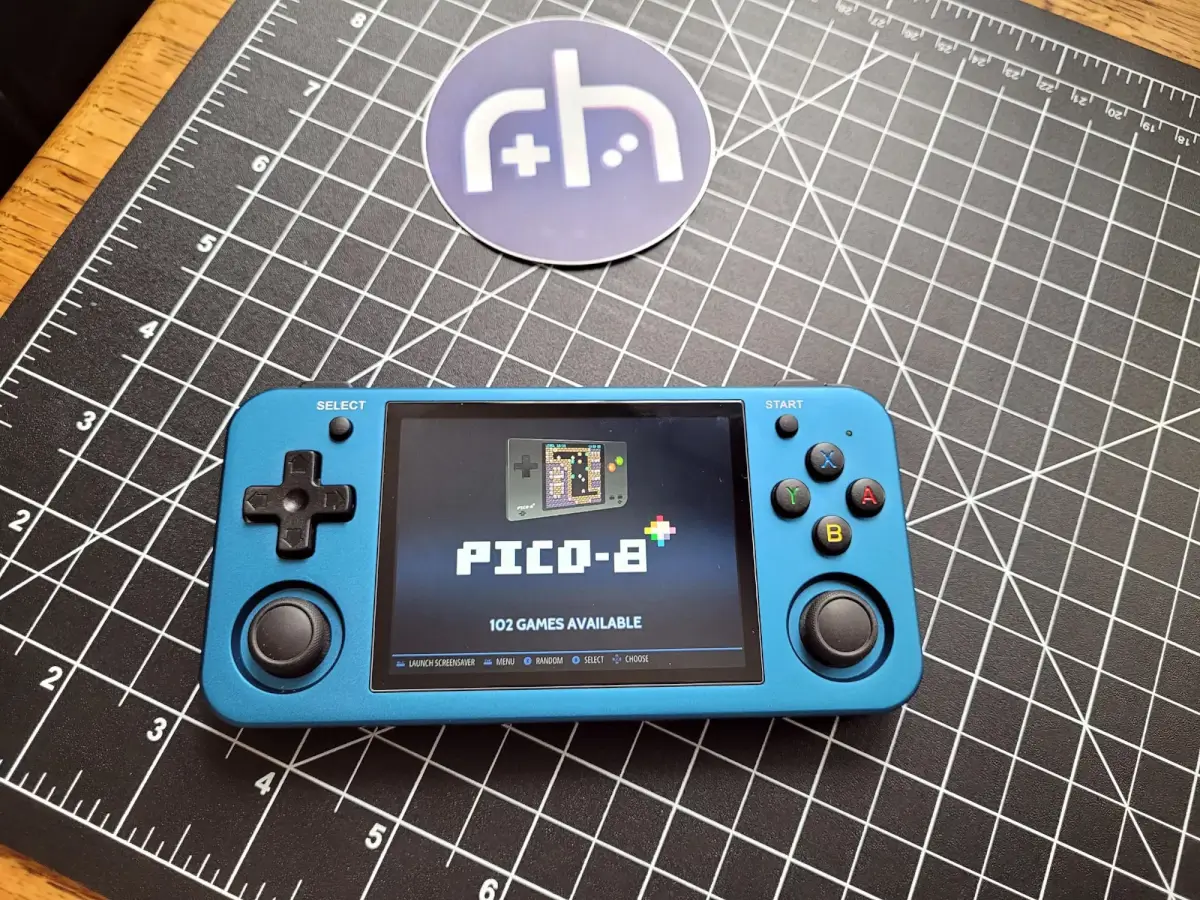
The Linux side offers the oft-used pairing of Emulation Station for a front end, with various emulators serving the place of the back end of the system, predominantly Retroarch in most cases. You can install various CFW, or custom firmware, which will often provide a similar experience but with tweaks and changes meant to provide better performance or quality of use. In fact, I would recommend that most users install Jelos or ArkOS on this device, two CFW currently available that are from passionate developers within the community.
However, the scope of this review will focus on the default image provided by Anbernic. This will be the experience you’ll get out of the box, and when you perhaps give this system as a Christmas gift for a child, it needs to work well out of the box. Thankfully it seems Anbernic have accomplished that task, providing a default image that gives us all the basics we need, as well as pre-configuring much of the system to suit the usual recommendations for settings. You’ll find systems running at the generally recommended aspect ratios, and some even with video filters chosen to better mimic the system they’re emulating.
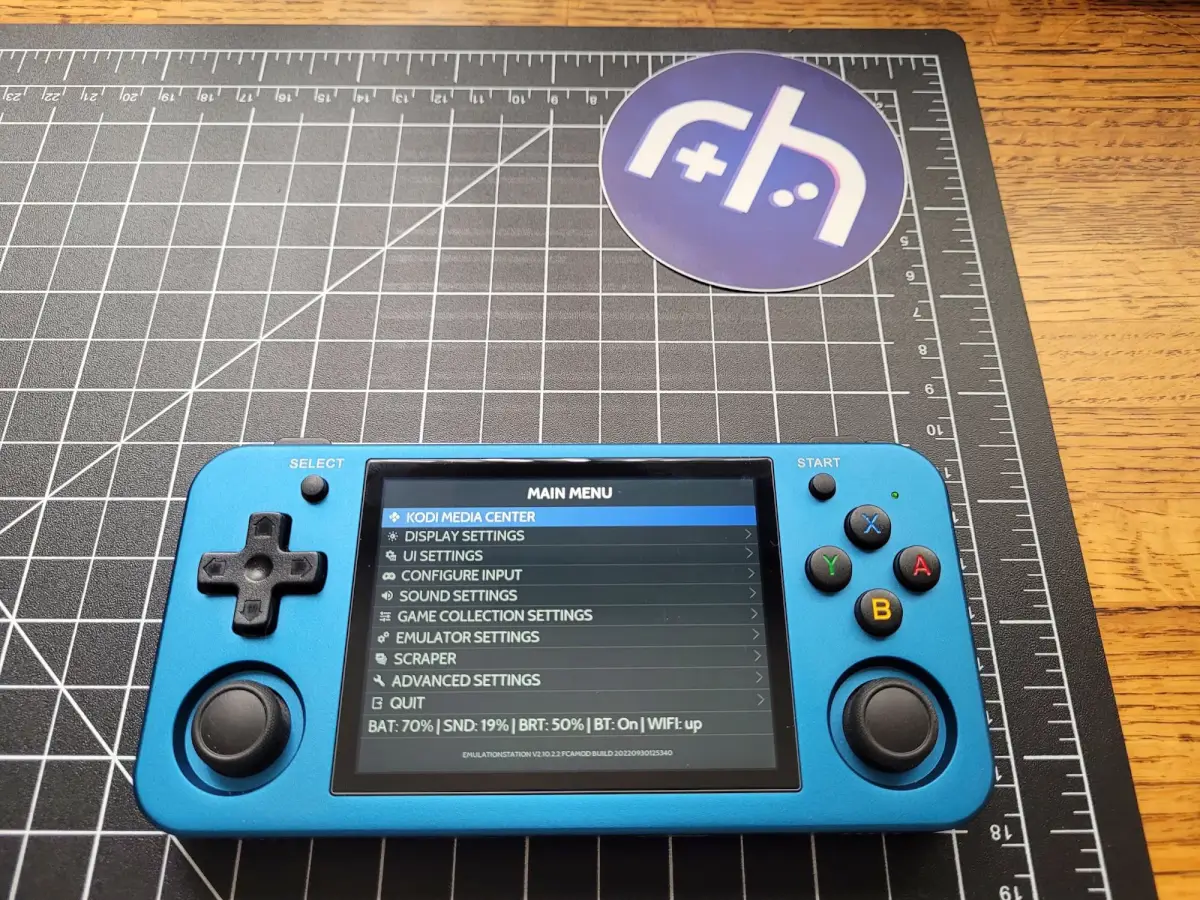
When you do need to dive into the options to tweak a setting here or there, the Linux experience keeps a lot of the major stuff in the frontend. You get to avoid the kerfuffle of learning the ins and outs of, say, Retroarch, and instead set major global and per-game options in a user-friendly list. It also provides easy access to all of your UI customization, media scraping tools, and updates.
Meanwhile, the Android side presents you with a less curated experience, but one that gives you more freedom to make it your own. It also presents options for emulators and games that simply aren’t present on the Linux side. The bonus if you already own an Android phone is that the experience will be largely familiar, if a bit limited. A lot of this limitation comes down to the fact that the default Android installation does not come with Google Play Store or Services installed, and while they can be installed through other means it will add extra strain to the system which is already operating fairly close to capacity.
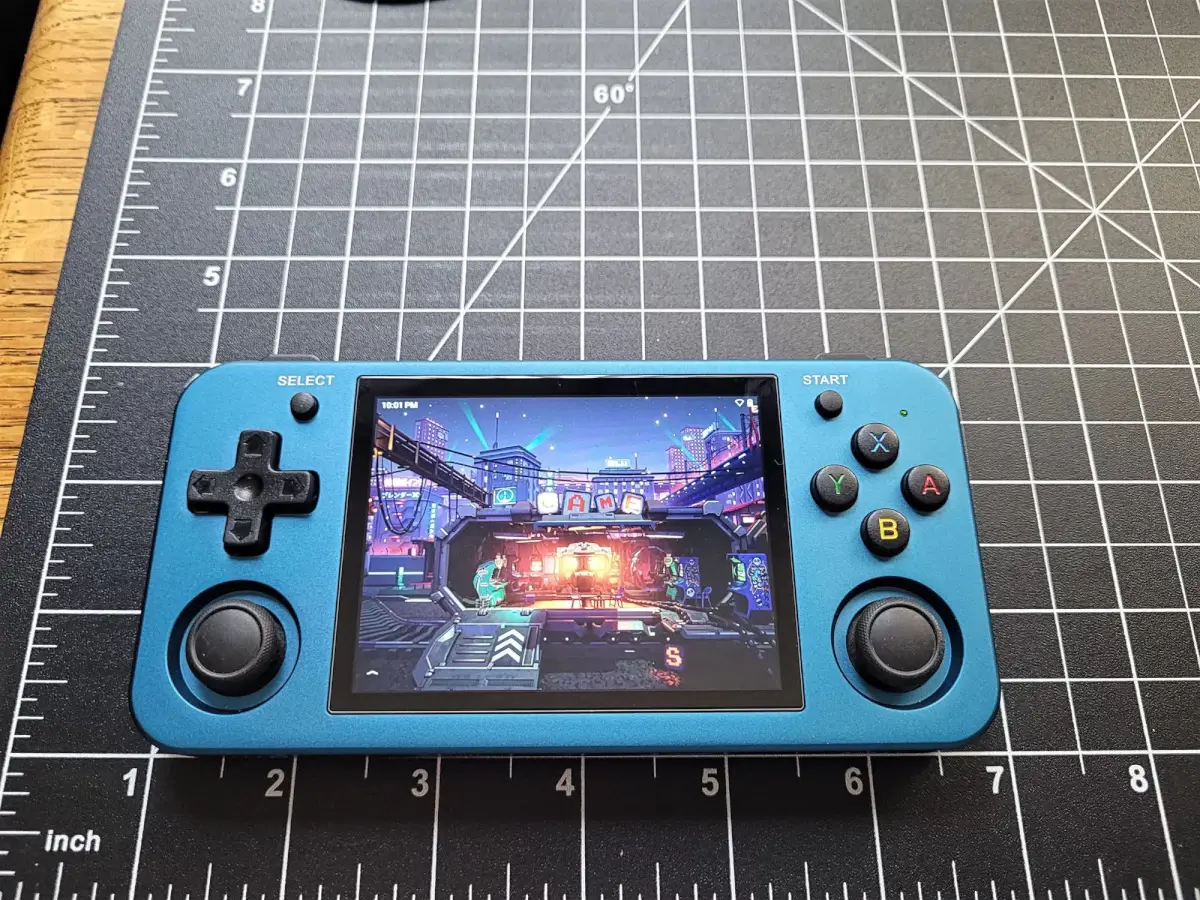
As a result of this limitation, you will be forced to sideload many apps, though the default image comes with most of the emulators you’ll need; many of them even preconfigured a bit. Also, some of them will provide better alternatives outside of the Google Play framework, Retroarch comes to mind as one of the emulators in which downloading the apk directly from their site results in a Retroarch install with more options available due to size constraints imposed upon in the Google Play Store.
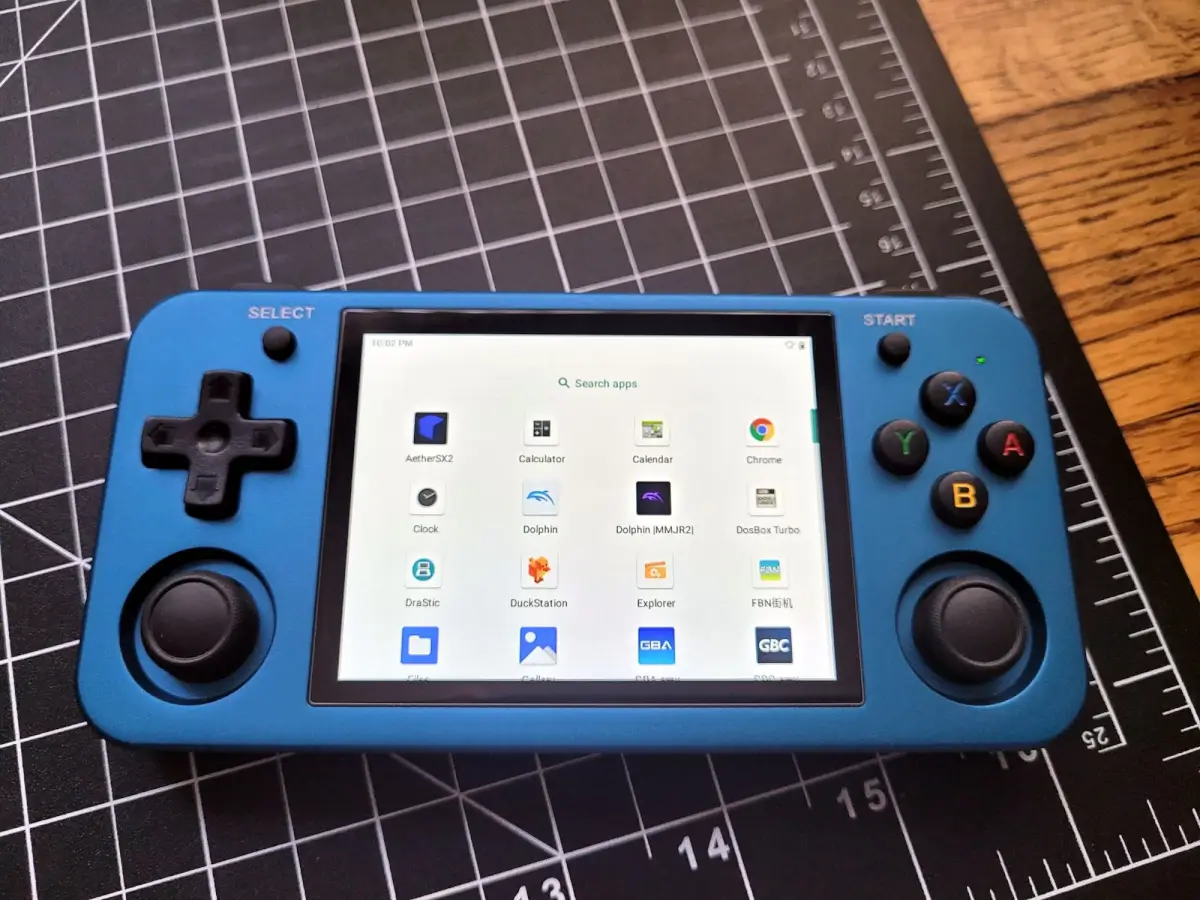
Anbernic does a decent job at providing a few tools to make the Android side of things more friendly than just a collection of standalone emulators and apps. It comes with a built-in touch controls remapper, allowing you to map buttons on the controller to specific touches on the screen for games without controller support. It also comes with a launcher front end that can be toggled from the notification shade labeled “Game Mode.” This mode attempts to replicate some of the feel of an Emulation Station front end, with the list views and scraped media, condensing the disparate emulators into a single unified experience. It does this job adequately for a new user, playing friendly with the pre-installed emulators, but if you’re more seasoned at Android emulation you may already have a favored frontend that has a more robust feature set.
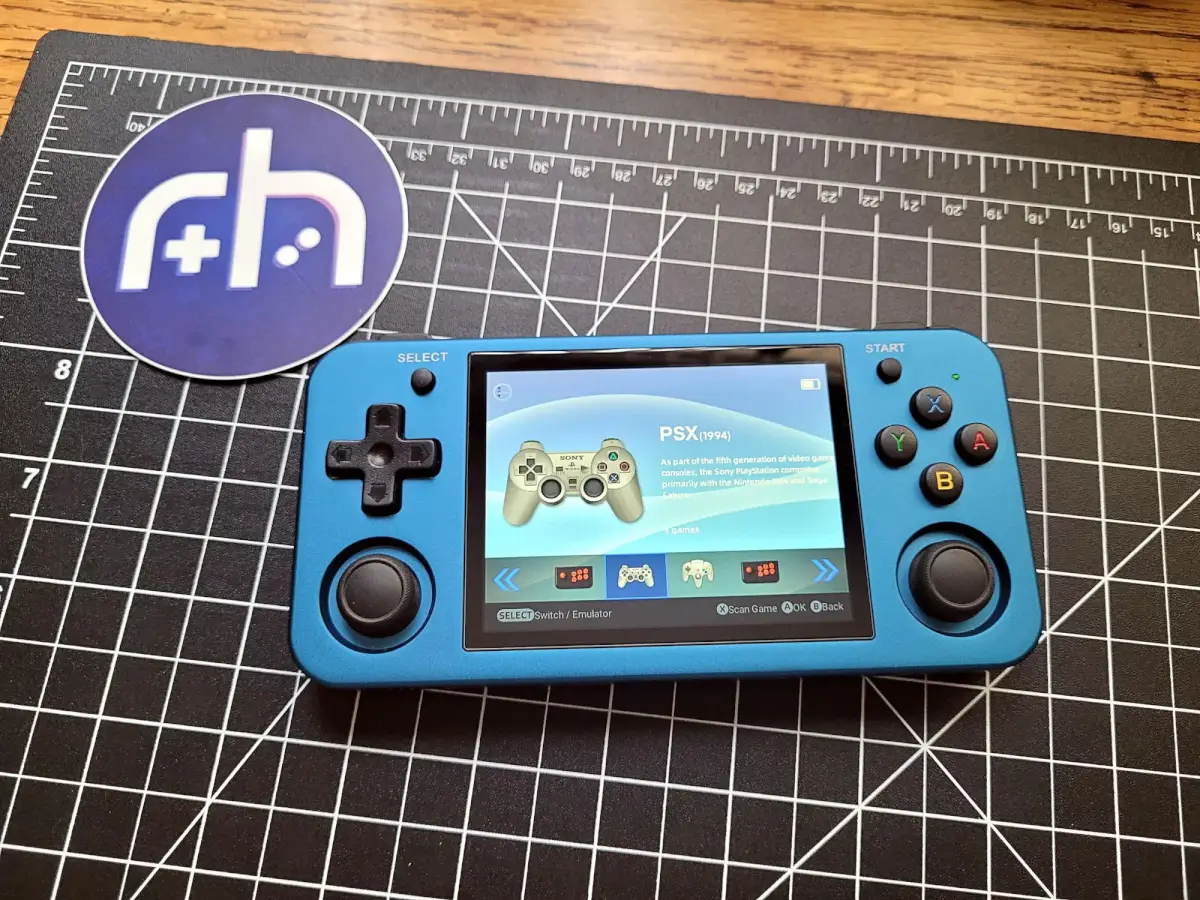
It seems that Anbernic is getting familiar with Android as they have moved into these dual-boot systems, and I’m hoping to see further improvement especially with regard to their upcoming Android-focused handhelds. The lack of Google Play services makes it difficult to recommend the Android side for general usage, along with a chipset that feels like it struggles under the weight of the more demanding OS. I’ll explore this a bit more in the following sections because there are good use cases for the Android side, so long as you’re prepared to work around a few drawbacks.
So What Can It Play?
| Fully Playable |
|---|
| Atari 2600, Atari 5600, Atari 7800 |
| Nintendo Entertainment System |
| Super Nintendo Entertainment System |
| Nintendo Game Boy |
| Nintendo Game Boy Color |
| Nintendo Game Boy Advance |
| Nintendo Virtual Boy |
| Nintendo 64 |
| Nintendo DS |
| Sega Master System |
| Sega Genesis / Mega Drive |
| Sega 32X |
| Sega CD |
| Neo Geo Pocket |
| Neo Geo Pocket Color |
| Sony PlayStation |
| Mostly Playable |
| Sega Saturn |
| Sega Dreamcast |
| Sony PlayStation Portable |
| Out of Reach |
| Sony PlayStation 2 |
| Nintendo GameCube |
| Nintendo Wii |
| Nintendo 3DS |
The 353 line, as I’ve noted before, is a solid step up from the 351 line that preceded it. Bringing N64, Saturn, Dreamcast, and PSP into realistic realms of performance where the 351 line could only glance into small portions of those libraries. Four libraries added is a great addition for making these devices the current definitive 4:3 systems. Having said that, obviously the same systems that have been perfectly playable in the past are handily covered here, from Atari to PSX. You still won’t really see this reaching into the realm of even booting PS2 or Gamecube, let alone playing them at all.
Sega Saturn

Odd duck, the Saturn, just seems to be rather tricky to run. You’ll find most of the library plays fine on the 353M, but there are a few challenging titles near the top of the range that struggle. Perhaps newer emulator cores or CFW can shore up the gap. In the Linux portion you’ll find a couple of Retroarch Yabasanshiro cores, and in Android you’d be well-served with the Yabasanshiro 2 standalone emulator.
Sega Dreamcast
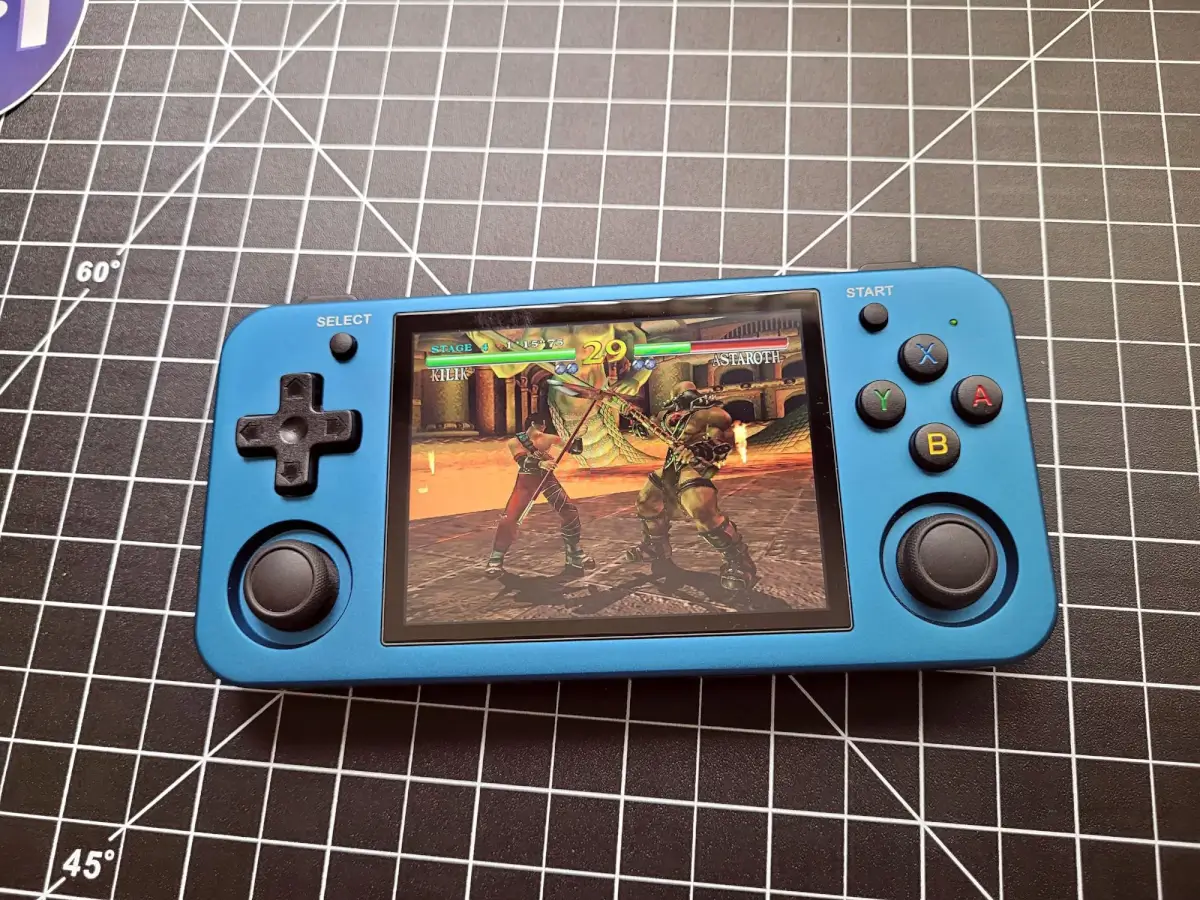
The Dreamcast runs really well, it has often been the easier to emulate on most devices compared to its younger brother the Saturn. You’ll need frameskip for some of the most intensive titles in the library, but you should get nearly full Dreamcast compatibility. Linux will offer several Flycast cores in Retroarch, while Redream is the emulator you want in your corner on Android.
Sony Playstation Portable
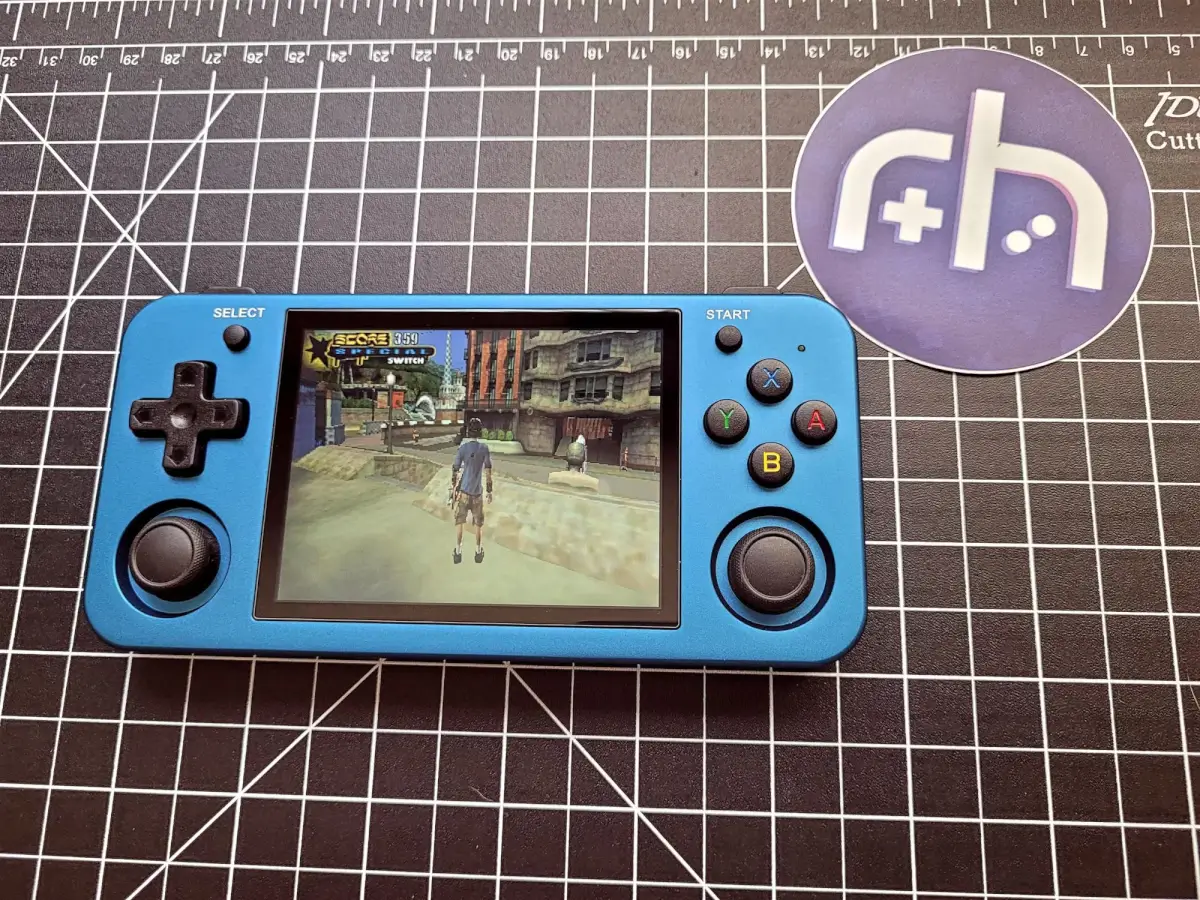
The PSP is perhaps one of the grandfathers of handheld emulation, and I fondly remember modding mine to handle all manner of GBA and Genesis titles. Now here we are, full circle, and it’s just not quite there yet. You’re going to get quite a lot of PSP running on here, if you’re prepared to either deal with letterboxing or stretching, but that top portion of the library will not run regardless of tweaks or settings changes in my experience. Almost there. Almost. You’re gonna get PPSSPP on either Linux or Android for the best experience here.
Nintendo DS
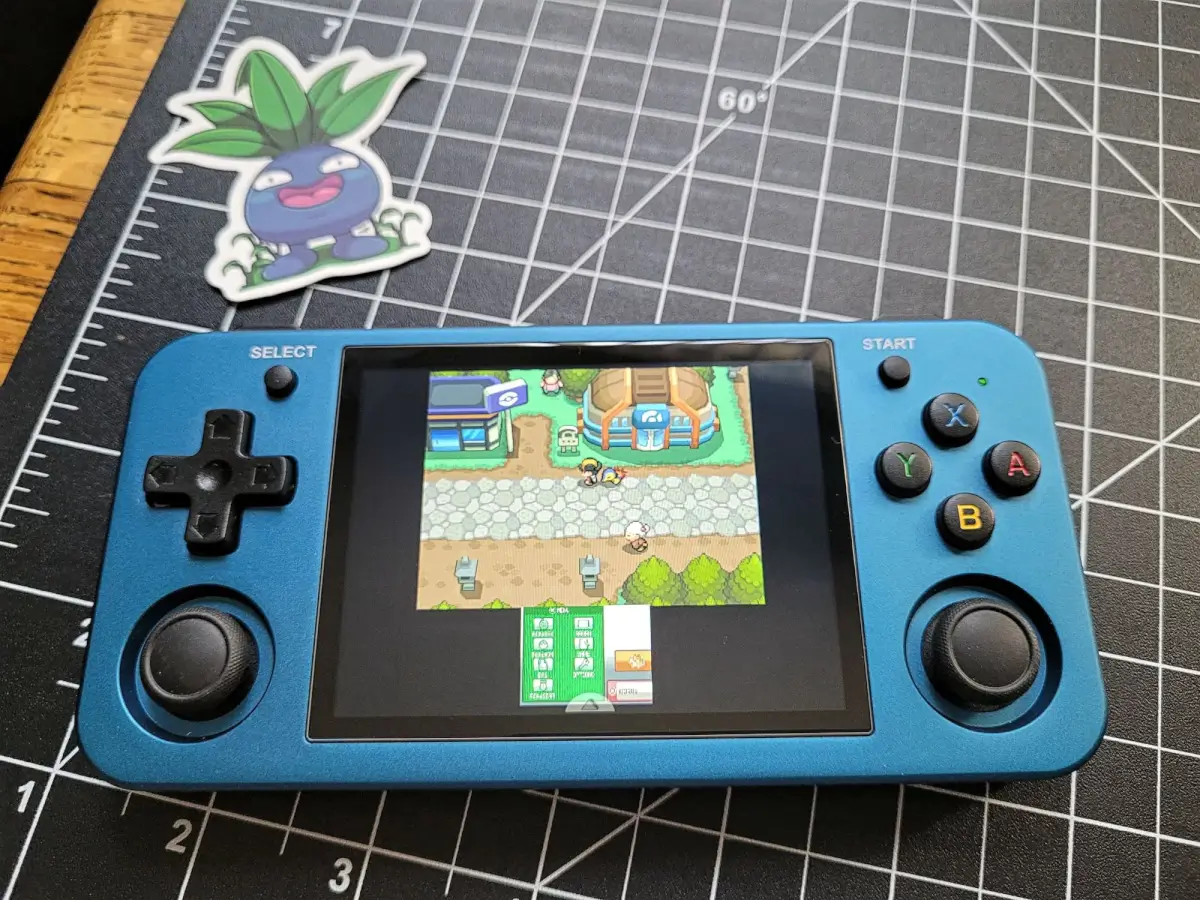
The DS is a system you’re going to want to be in Android for, as the touchscreen doesn’t quite work properly in the Linux end. Thankfully, best boy emulator Drastic has plenty of customization options to get the screens to your liking on this otherwise ill-suited little 4:3. Besides issues emulating dual screens on a single-screen handheld, this 353M runs DS beautifully. If you can find games that run well with the occasional switch between screens, you’ll have a wonderful time.
Native Android
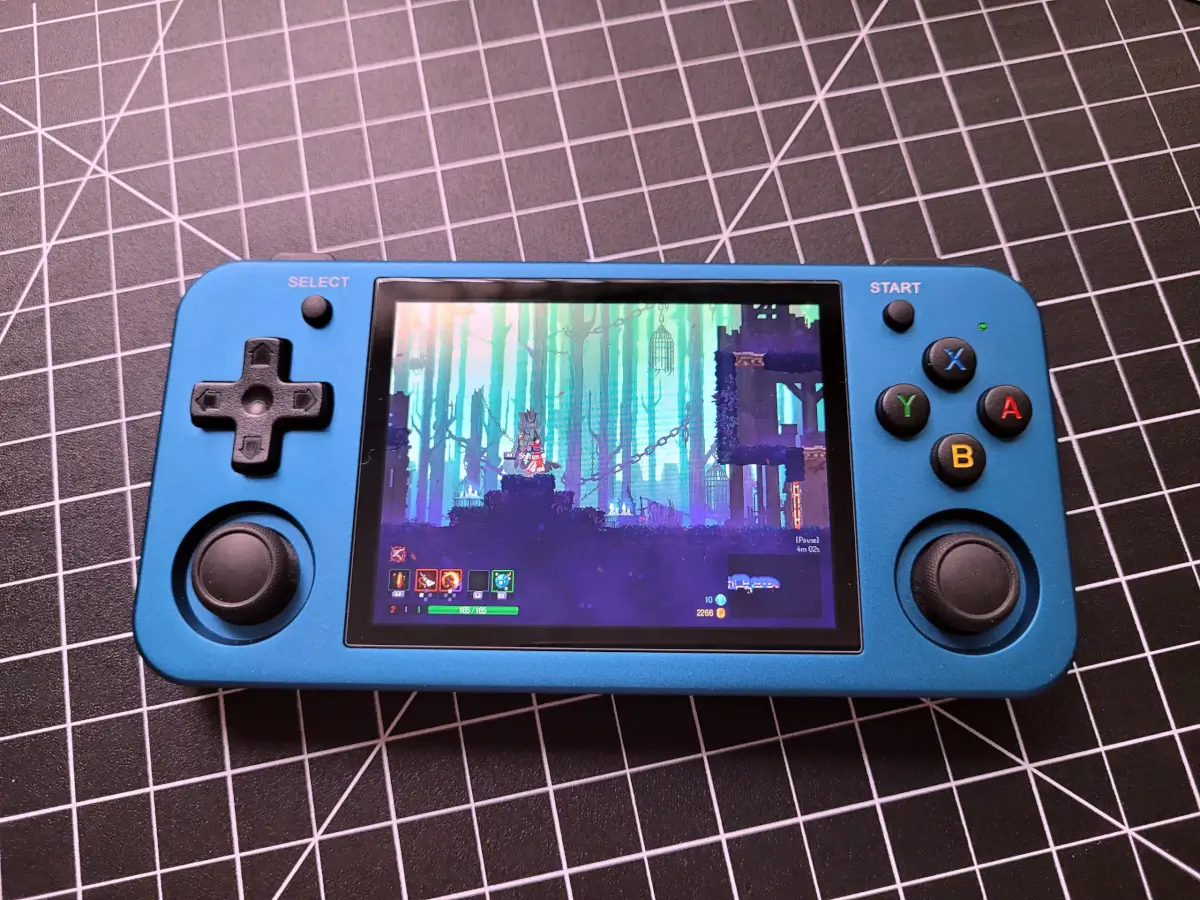
When we dive into the native Android apps for this device, we will be hindered by the lack of Google Play support, leaving many games unable to run normally. However, I did get Dead Cells running on this, and I’m surprised to say it actually plays quite well. I consider Dead Cells a pretty good test because most of these handhelds have been sitting right on the edge of playable or not playable for this game, and this (with some hitches and stutters when loading in new assets) surprisingly hits playable framerates.
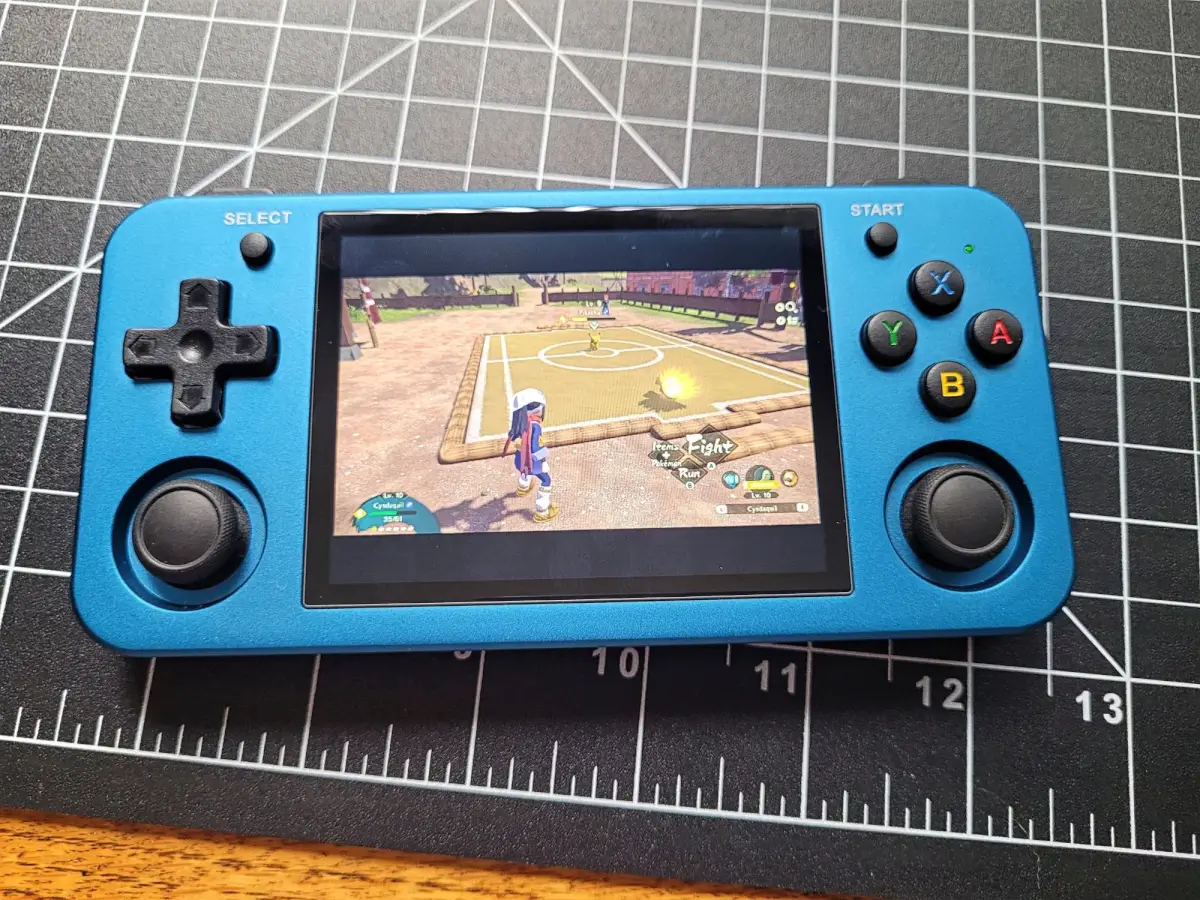
Meanwhile, the other advantage of having Android and wifi on these devices is support for streaming apps like Moonlight, Xbox Game Pass, Steam Link, or Geforce Now, although the Linux side also offers Moonlight functionality. Using the built-in 5GHz wifi I was able to get a pleasantly playable experience out of the pictured Switch and Gamecube emulation. The 4:3 screen will be perfect for casting over PS2 and Gamecube games which were made during the end of the 4:3 era, but you’ll obviously have picture choices to make with more modern titles.
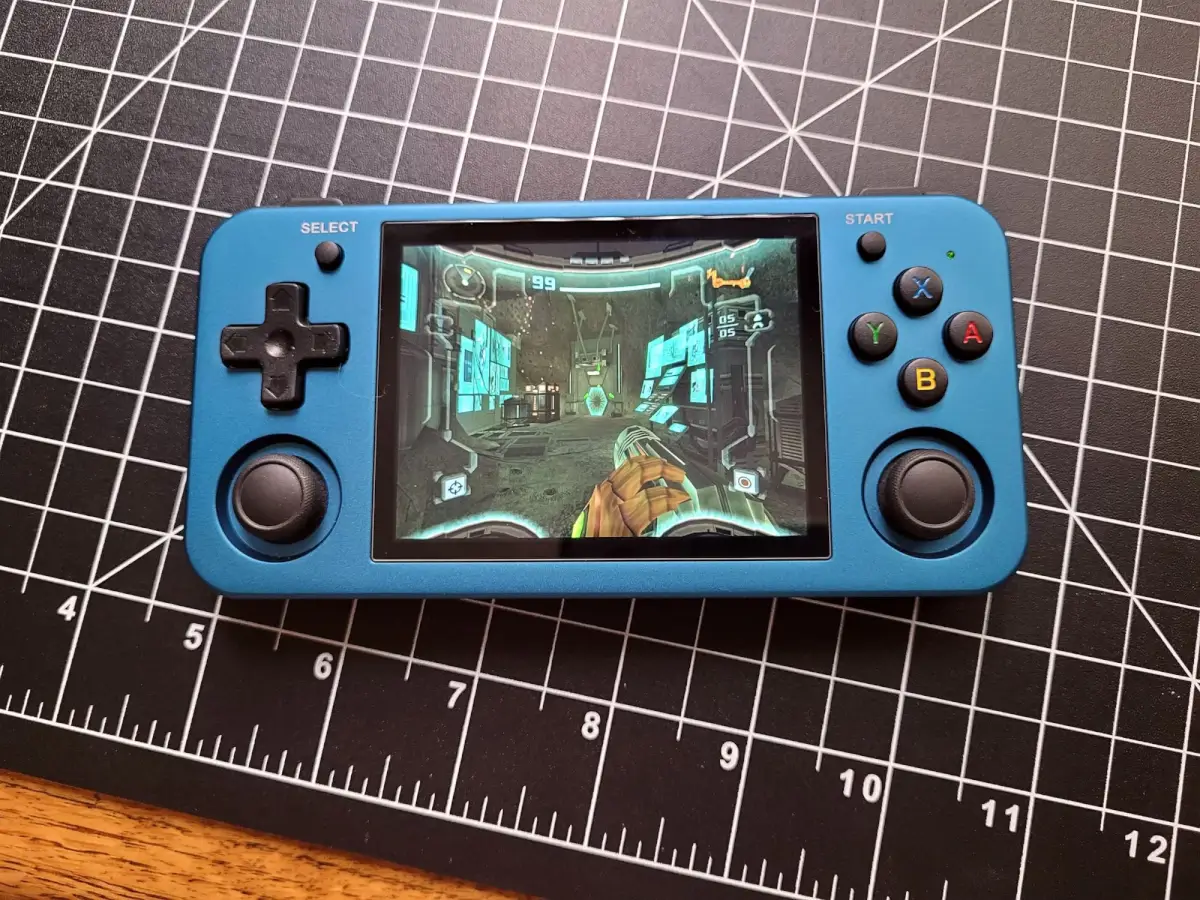
Conclusion
So this will probably be the last of the 353 line unless Anbernic really has a surprise up its sleeve with a 3:2 aspect ratio alternate version or something. Where does that leave it? Better than its peers? I suppose it depends on what you’re looking for. It’s the sleekest, most pocketable device in the line. It’s definitely the most premium feeling with that metal shell. While it is a refinement of the brick-like form Anbernic seem to have mastered in recent years, it certainly doesn’t do anything ambitious with the design. If you’re looking for functional and premium, this is the 353 to do it, but in an admittedly someone boring utilitarian design. That blue, though, man is that a pretty blue.
Delicious:
- A power step up from previous generations of Anbernic handhelds, adding libraries like the N64 and Dreamcast makes for a compelling value upgrade for those that have been loving their 351MP but wanted a bit more.
- Metal handheld lovers rejoice! This thing feels great in the hands, I love the heft of a nice metal shell. The signature Anbernic membranes for the buttons and fancy new Hall sensor analog sticks definitely make this the definitive 353 device.
- A dual-boot system and plenty of built-in tools to make this a very flexible and customizable experience for numerous tastes.
Suspicious:
- Some users are still experiencing diagonal dpad issues that they were having in the 353V.
- Android experience feels unpolished and lacking in robust features, and does not perform as well as the Linux OS in many cases.
- Wifi connection can still be dodgy due to metal shell despite plastic side panels, and can result in some occasional speaker interference.
Final Thoughts:
- Alright I know I said it a lot but one last time: Premium. This is a device that looks and feels the part of an Anbernic design that has been polished and refined to a shiny finish. If you enjoyed their previous models in this design, you’re gonna love this, because it’s more of the same but better.
